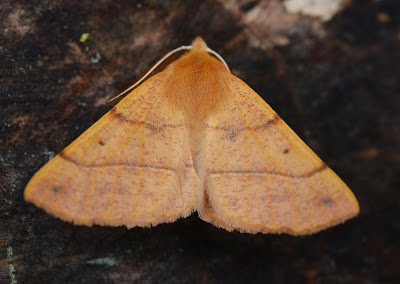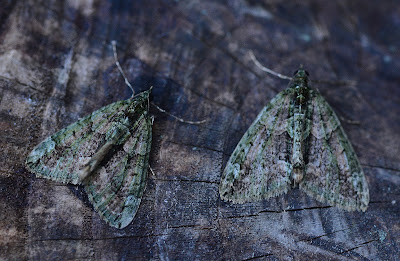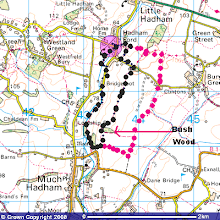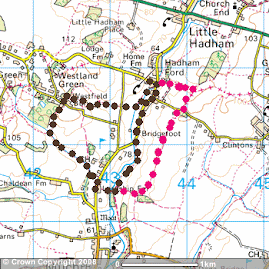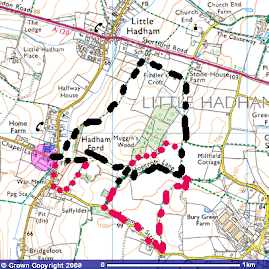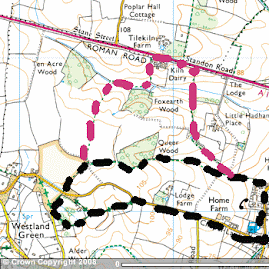Setting off at 5am, arrived in Wells Next The Sea for a coffee at 7.15. Slow journey due to fog in places. After the coffee I headed to North Point Pools where it was apparent is was going to be a bright day. Great for photos but meant that I was unlikely to come across any rarer migrants that may have been pushed inland off the North Sea due to the very calm conditions.
Usual fare at NPP, a ruff flew in, several snipe and herds of greylag and Pink footed geese. I checked the dense hawthorn but just a few chiffchaffs. A reed warbler scratched a call, unseen before I headed back to the car. The sun was still low so viewing to the east was not good whereas looking west was superbly lit. However, far to the east, a Spoonbill was noted.
 |
| Ruff |
 |
| 3 of 100's of greylag geese |
 |
| Upbeat and noisy Black headed gull |
 |
| Still noisy on the downbeat |
I now headed to Cley beach where I first checked the sea. A sandwich tern went by with a food item, 3 Guillemots dived relatively close in and a Red throated diver headed west. From here, I wandered east along the shingle. I checked the wire fence and posts for the inevitable Wheatear, at least 3. Also, a solitary Whinchat and plenty of Meadow pipits. Back at the sea, I noted another 2 Guillemot close in and a Common seal popped up to check me out.
 |
| Typical Wheatear pose |
 |
| Another distant Wheatear |
 |
| Guillemot |
 |
| Guillemot, showing small wings that are used as flippers underwater. |
 |
| Gone again |
 |
| Back up |
 |
| Common seal, youngster, I suspect |
 |
| Common seal. |
Back to the car and parked at Snipe's Marsh to check Walsey Hills before a wander along the East Bank. Not too much around, finches at Walsey Hills and plenty of butterflies and Colletes hederae (Ivy bee) on flowering ivy. Plenty of Black tailed godwit around the Serpentine but the sun meant views over Arnold's Marsh were silhouettes and heat hazed. I headed back to the car and off to Gramborough Hill.
Here, a large flock of Goldfinch along with more Meadow pipits, Wheatears and very territorial Pied wagtails. I sea watched from the top of Gramborough Hill. A very distant Great Skua headed into the sun towards Sheringham whilst an Arctic skua chased a Sandwich tern, too fast for the camera.
 |
| Red admiral |
 |
| Comma |
 |
| Goldfinch |
 |
| Juvenile Little grebe |
 |
| Battling with a shellfish |
 |
| Pied wagtail on Salthouse beach |
 |
| Meadow pipit, Salthouse beach |
Time to head west, so off to Brancaster Staithe for a check on the mud as by now the tide was out. Black tailed godwits, Turnstones and a Little egret all present, plus a selection of gulls. Chatted to a photographer, Sheila who was busy getting great images of a confiding Turnstone. By now the temperatures were approaching 20C and the sun was at its highest, a little too sharp for photos but all was enjoyable.
 |
| Adult Turnstone |
 |
| Herring gull |
 |
| Black tailed godwit |
 |
| Common gull |
 |
| Turnstone, another adult showing the last few summer plumage feathers |
 |
| Little egret |
Off to the final destination: Titchwell RSPB Reserve. If you have not been here for a while, plenty of changes with diggers putting in new channels in the reedbeds and plenty of new islands upon the Freshmarsh. This area was full of birds: 100's Golden plover, Lapwing, Ruff, several Dunlin and Avocets. In one corner of the Freshmarsh near the path to the Parrinder Hide, Meadow pipits, Pied wagtails and a flock of linnets sat on the mud whilst a skulking Reed warbler was noted in the reeds.
From the Parrinder hide more of the same along with Ruff and Teal. A Little stint busied itself in the newly turned mud, distant and tiny.
Off to the beach. A Grey plover on the Tidal Marsh before a trek out to the mussel beds which are uncovered at very low tides. These were covered in waders and gulls but nothing on the sea apart from a small raft of Common scoter. A wonderful place to be and by now the light was just beginning to fade as the sun began to set over towards Holme. Another check from the hides to see if the Stint had moved closer, it hadn't, before I finished the day with a few photos showing pleasing reflections in the calm conditions and low sun.
Back to the car and home by 9.30 after a coffee stop on the way. Super day out. I shall be returning on Saturday with a birding friend. I would like the weather to be a little more damp and stormy on Friday but presently, that does not look likely, so more of the same species, I suspect.
 |
| Incoming Golden plover |
 |
| Another ruff |
 |
| Moulting drake Teal |
 |
| Starlings |
 |
| Redshank |
 |
| Juvenile Herring gull at the beach |
 |
| Group of Knot |
 |
| Oystercatcher |
 |
| Curlew on Thornham Marsh |
 |
| Spot the Little stint, about the size of a greylag's webbed foot! |
 |
| Meadow pipit |
 |
| Reed warbler |
 |
| Yet another ruff. |
Species List for the day
- Red throated diver
- Little grebe
- Cormorant
- Little egret
- Grey heron
- Great egret
- Spoonbill
- Mute swan
- Pink footed goose
- Greylag goose
- Canada goose
- Brent goose
- Shelduck
- Egyptian goose
- Mallard
- Gadwall
- Shoveler
- Wigeon
- Teal
- Tufted duck
- Common scoter
- Red Kite
- Marsh Harrier
- Common buzzard
- Kestrel
- Peregrine falcon
- Pheasant
- Moorhen
- Coot
- Oystercatcher
- Avocet
- Grey plover
- Golden plover
- Lapwing
- Knot
- Sanderling
- Turnstone
- Dunlin
- Little stint
- Redshank
- Black tailed godwit
- Bar tailed godwit
- Curlew
- Snipe
- Ruff
- Great skua
- Arctic skua
- Black headed gull
- Common gull
- Herring gull
- Lesser black backed gull
- Greater black backed gull
- Kittiwake
- Sandwich tern
- Guillemot
- Wood pigeon
- Collared dove
- Green woodpecker
- Great spotted woodpecker (heard)
- Skylark
- Swallow
- Meadow pipit
- Pied wagtail
- Wren
- Robin
- Wheatear
- Whinchat
- Blackbird
- Cettis warbler (heard)
- Reed warbler
- Willow warbler
- Chiffchaff
- Great tit
- Blue tit
- Coal tit (heard)
- Long tailed tit
- Bearded reedling (heard)
- Magpie
- Jackdaw
- Rook
- Carrion crow
- Starling
- House sparrow
- Chaffinch
- Greenfinch
- Goldfinch
- Linnet
- Reed bunting
 |
| Linnet |
 |
| Black tailed godwit with a single Lapwing |
 |
| Guillemot |
 |
| Final ruff. |



